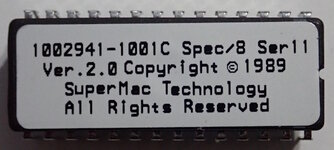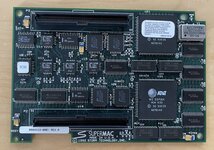The Spectrum/24 Series III and Spectrum/8 Series III boards have unique ROMs, use different/newer components vs. the Spec C/SE30 boards (the SMT01 vs TMS) and the Spec C/2.0 ROM is not compatible.
The design of the Spec/8 Series II SE/30 board is similar to the Nubus version and the ROM is quite similar, but there was a different config process, different board IDs, and other special cases for the SE/30. I don't think the Spec/8 II 2.0 ROM is a unified one and the SE/30 version I recall is 1.0d1 (I think) -- not at home at the moment so can't check the boards. n.b. The board IDs for the Spec II Nubus and SE/30 boards should be different as far as I know.
If you are interested in QuickDraw-related bug trivia, Those boards both have the QuickDraw-related BFEXTU interaction bug. For example, if you use the monitors cdev to position the Spectrum 19" screen on the bottom edge of the SE/30 screen and shift it to the right -- say...halfway across the bottom, then put the menubar on the lower/Spectrum screen, then drag a folder window from the SE/30 screen region diagonally downward across the origin/menubar/upper left corner of the lower screen, QuickDraw will bus error the Mac (depending on OS version). It has to do with the fact that there is a bitfield extract that occurs at the origin that tries to access memory ahead of (and also after the frame buffer for lower-right accessess (one long per bit depth -- not available on those boards because, for example, baseAddr = base of video RAM). So, in this example, when the OS/QuickDraw tries to access memory ahead of the frame buffer (which also happens to be the start of video RAM), it bus errors. Earlier SuperMac boards did not have extra buffering protection, so there were certain (unlikely) corner cases where there could be a crash. Extra protection was added in later boards and Apple also eventually made changes to QuickDraw to correct this architectural issue -- certainly by System 7 and also System 6.0.x. I have commented on this issue elsewhere and I think there was also a tech note about it at some point. Anyway - if you are interested in retro design and want to create a retro video card (or do something that manipulates frame buffers), make sure you account for memory beyond the start or end of your frame buffer for maximum QuickDraw compatibility.



